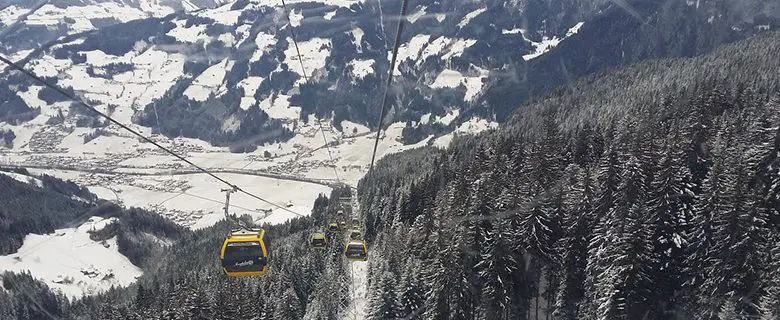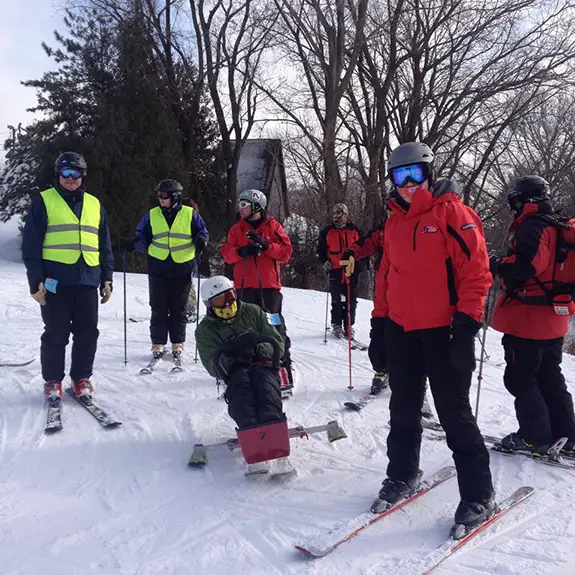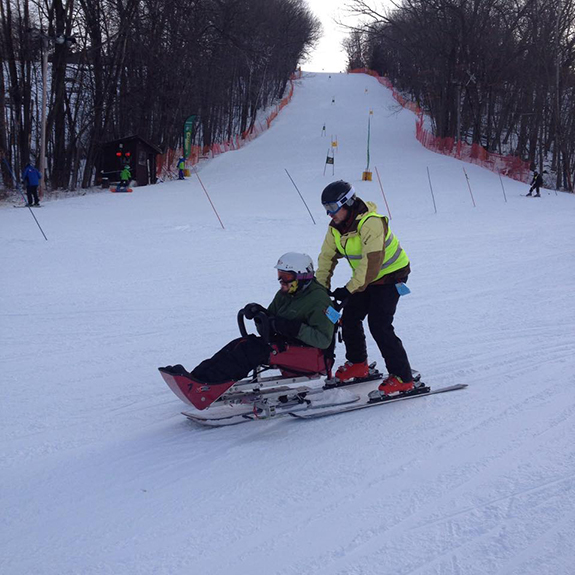
Adaptive Adventures: skiing with a disability
Ryan Nell, who has cerebral palsy and uses a power wheelchair, talks to us about his experience of skiing with Adaptive Adventures, a non-for-profit organisation that enables disabled people to ski.
My name is Ryan and although my disability poses some limitations to me, I recently graduated from my masters degree in education after having earned a Bachelor’s degree in Interpersonal Communication Studies . I have a beautiful fiancée named Andrea, and a wonderful service dog named Wally. The three of us create a wonderful support system for each other, and we love to experience new things together!
Andrea recently took a new job with the company called Adaptive Adventures, which is based in Colorado and aims to facilitate adaptive outdoor recreation opportunities for people with physical disabilities, including veterans of the armed forces. I had the opportunity to participate in a two day downhill ski camp put on by Adaptive Adventures at Cascade Mountain in Portage. The $175 (£127) price tag included two days of lift passes, equipment, personalised lessons, meals, and one nights lodging. Quite a bargain if you ask me!
I used what is called a bi-ski. Basically, the setup consists of two skis and two buckets mounted to those skis, one for your butt and one for your feet. You are then strapped in very tightly to those buckets. Think about it this way, however tightly a standup skiers boots need to be bind to their skies is how tightly a bi-ski user needs to be tucked into those buckets. Eventually I learned the tighter you are tucked into the buckets the more responsive the ski will be, and ultimately the more control you will have.


As we ascended the hill I couldn’t help but notice how serene everything seemed from that high above the commotion. When I reflect on the juxtaposition of the serenity and my internal excitement as we approached the top of the hill, it elicited a combination of emotions I have never felt before and will continue to seek forever. As we reached the top of the hill and exited the chairlift the anticipation was almost too much to handle.
Depending on mobility level and range of motion, there are a few ways to approach taking a run down the hill. A person may use what are called outriggers, which are basically crutches with tiny skis on the ends. A skier would strap one to each arm and use them to control speed and direction. A skier with less mobility, like myself, who does not have the ability to use outriggers, needs to have someone tether them. When a sit-skier is tethered, there is a standup skier behind the sit-skier to help them control the speed.
Turning the sit ski takes very little effort. For the most part, whichever direction the skier turns their head is the direction the ski will go. In this fashion, the more the skier leans their weight to one direction the harder the ski will turn. The person tethering will help the skier control direction if necessary or by request.


Adaptive Adventures does great work through helping people with disabilities have meaningful outdoor recreation experiences. But it goes deeper than that, as members of a historically and continually oppressed group, people with disabilities often struggle to merely live in American society, much less flourish. Organisations like this help to manifest two of the greatest rights American citizens have – liberty and freedom. I hope I have many more opportunities to interact with this organization and the folks that make it great. and in that process uncover parts of myself and others that improve the lives of everyone around us.
By Ryan Nell
Check out…
• The bus hit him – skiing saved him
• Snowbility: skiing no matter what your ability
• Q&A with disabled skier Talan Skeels-Piggins
Get in touch by messaging us on Facebook, tweeting us @DHorizons, emailing us at editor@disabilityhorizons.com or leaving your comments below.